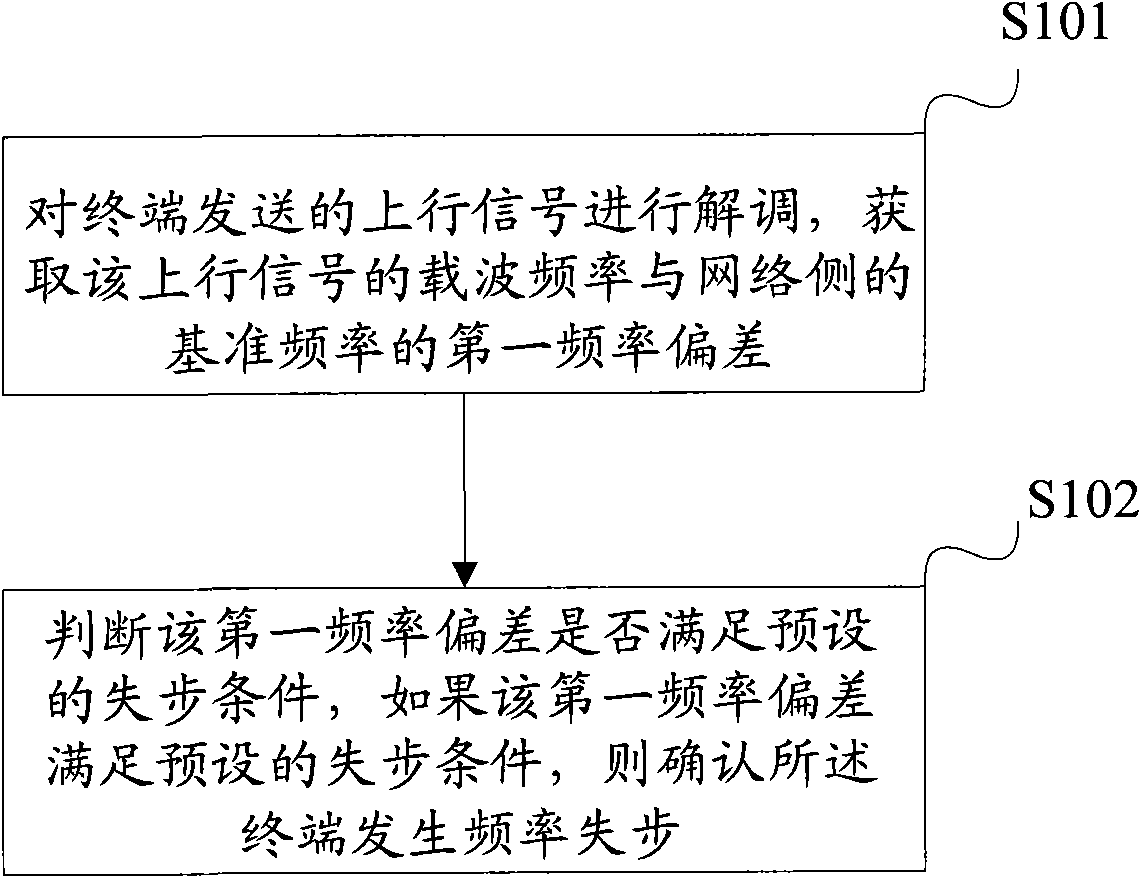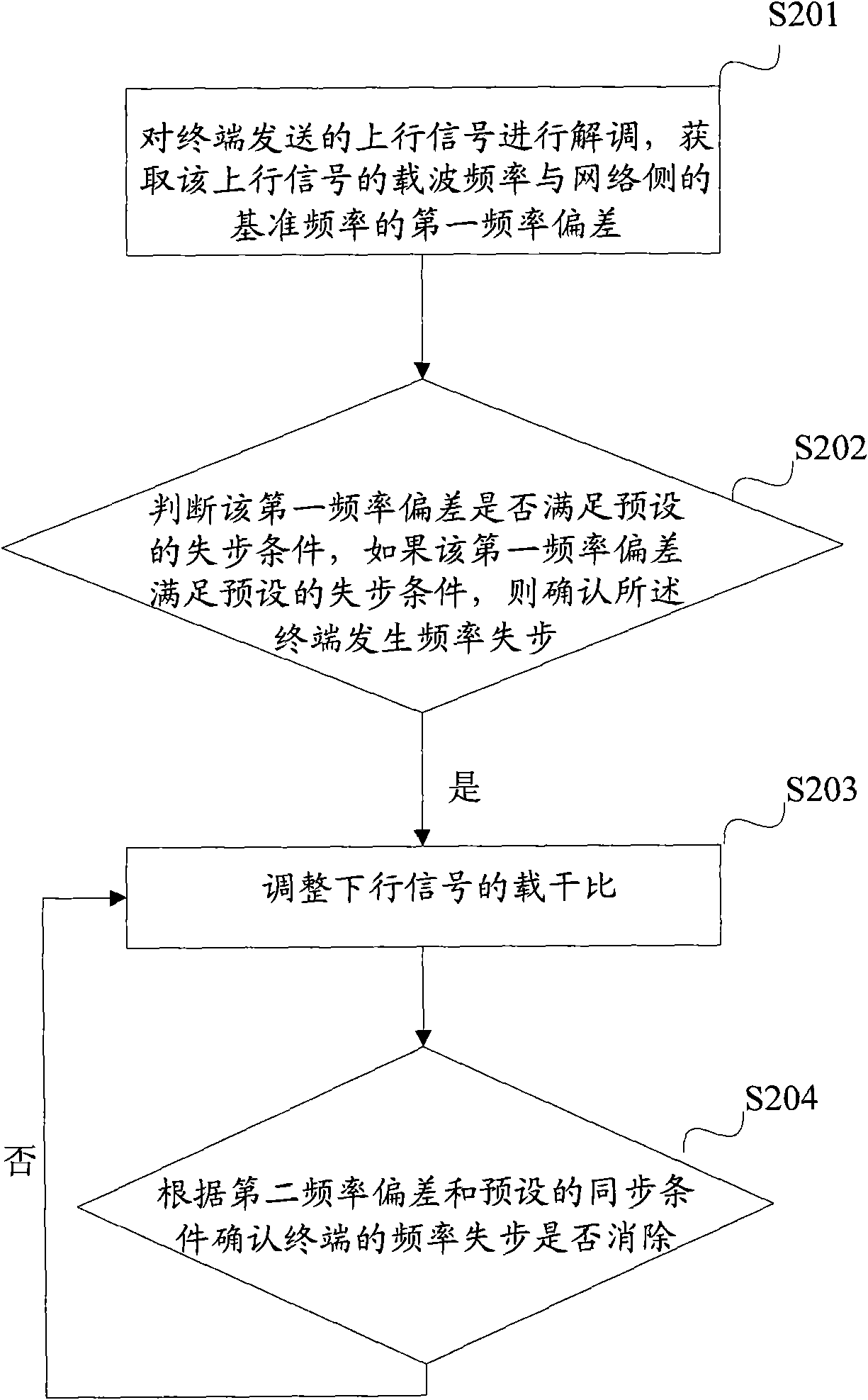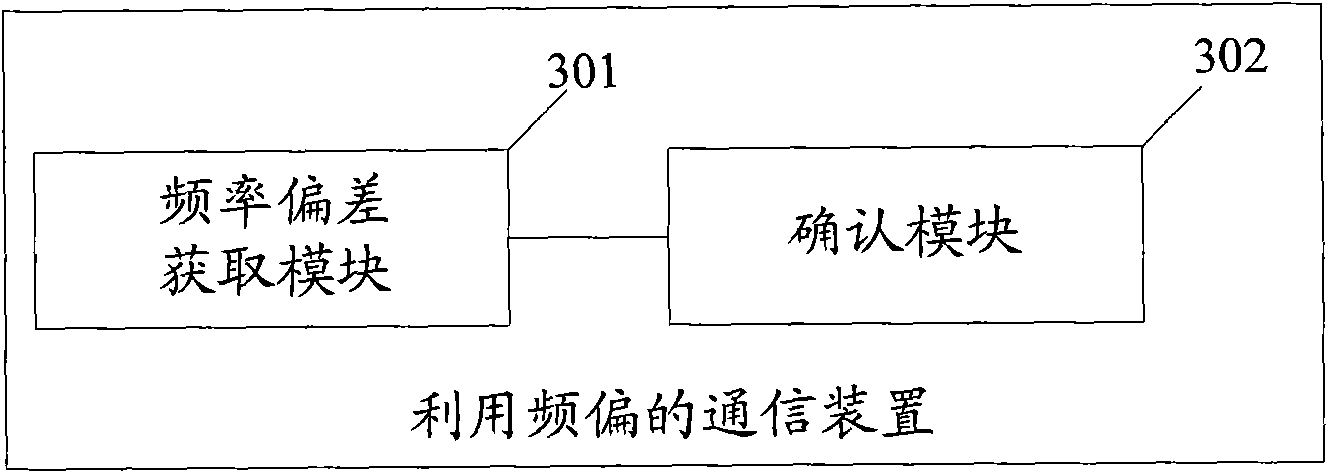Communication method utilizing frequency offset, device, base station and base station control device
A technology of frequency offset and base station, which is applied in the field of communication technology using frequency offset, and can solve problems such as terminal dropped call voice quality, dropped call voice quality, and degradation
- Summary
- Abstract
- Description
- Claims
- Application Information
AI Technical Summary
Problems solved by technology
Method used
Image
Examples
Embodiment Construction
[0020] In order to make the object, technical solution and advantages of the present invention clearer, the embodiments of the present invention will be further described in detail below in conjunction with the accompanying drawings. Here, the exemplary embodiments and descriptions of the present invention are used to explain the present invention, but not to limit the present invention.
[0021] Under the existing network architecture, the terminal may drop calls because the carrier-to-interference ratio is too high or too low, but the inventor of the present invention has found through a lot of testing and analysis that the reason for the terminal call drop is mainly because the terminal It is caused by too large deviation between the reference frequency of the network side and the reference frequency of the network side. Due to the large deviation between the reference frequency of the terminal and the reference frequency of the network side, the terminal fails to receive t...
PUM
 Login to View More
Login to View More Abstract
Description
Claims
Application Information
 Login to View More
Login to View More - Generate Ideas
- Intellectual Property
- Life Sciences
- Materials
- Tech Scout
- Unparalleled Data Quality
- Higher Quality Content
- 60% Fewer Hallucinations
Browse by: Latest US Patents, China's latest patents, Technical Efficacy Thesaurus, Application Domain, Technology Topic, Popular Technical Reports.
© 2025 PatSnap. All rights reserved.Legal|Privacy policy|Modern Slavery Act Transparency Statement|Sitemap|About US| Contact US: help@patsnap.com



